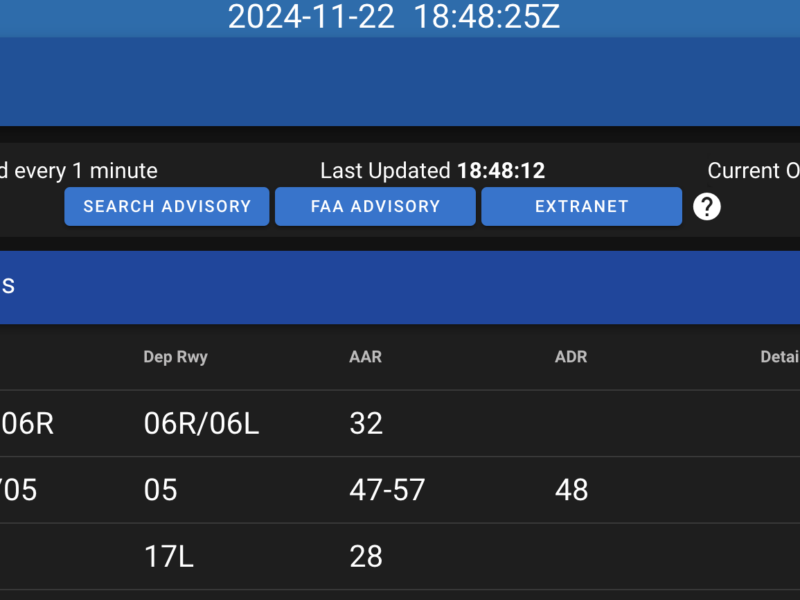Let’s take a look at an example METAR with CRFI data in it:
CYFB CRFI 17/35 -22 .34 0201190630
In order, the block of data contains:
- Airport/Station Ident
- CRFI Indicator
- Runway
- Temperature
- CRFI value
- Date/Time reading was taken
So the CRFI for runway 17/35 is 0.34. We can use this value now to figure out how much extra runway we may need on landing. Let’s take a look at Table 1 in the AIM, Section AIR 1.6.6. You can also find the CRFI charts in the CFS.
If your performance calculations indicate that you will need 2000 feet of runway to land, with a CRFI of 0.34, you will in fact need 4170 feet. We used table one because the type of aircraft we’re flying does not have discing or thrust reversers. One thing to note. These distances assume that you’re wheels do not lock/skid when you apply brakes.
It is important to do all your performance calculations first, then use the table to find out the extra distance needed due to the CRFI. It’s not recommended that you extrapolate the data in the tables either. You should also round down to the nearest CRFI value.
Table three allows you to figure out your maximum allowable crosswind. It’s your standard cross-wind chart/calculator with the addition of CFRI values along the top and bottom. Looking at the chart, you can see that the maximum allowable crosswind for a CRFI of 0.34 is approx 12knots. At that speed and above, you may be unable to stay on the runway as the wind will blow your aircraft off to the side as there is insufficient friction on the runway to keep you in place.
In my next post, I am going to talk another winter tool that complements the CRFI. It’s the runway surface condition report! Stay Tuned.


got a question:
I know what that crosswind thing and how if its more than what you calculate you may slide off the side of the runway…
does it depend on the type of airplane at all?
Thats a good question. I had the same one.
It seems to only be a guidline and there are no hard evidence that you cant apply the chart from a C150 to a Boeing 757.
There is no mention in any documentation that I can find that there are any limits to when you can apply this chart to your aircraft type.